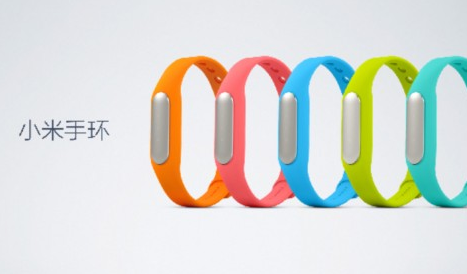The market for connected wearable devices jumped in early 2016, led by fitness tracker maker Fitbit, while Chinese group Xiaomi raced past Apple to second place, a survey showed last Monday.
上周一公布的一份调查显示,今年年初,联网可穿戴设备市场发展迅猛,健身追踪器制造商Fitbit一马当先,我国小米公司超过苹果公司跃居第二。
Global sales of wearables -- a broad category that includes fitness bands, smartwatches and connected clothing, shoes and health gadgets -- rose 67.2 percent in the first quarter compared with a year earlier.
全球可穿戴设备一季度销量同比增长67.2%。可穿戴设备类别广泛,包括健身手环、智能手表及联网服装、鞋子和健康装置。
The market slowed from an even hotter pace in late 2015, when wearables were up 126 percent. IDC cited a "seasonal retrenchment" from the strong holiday sales.
据悉,联网可穿戴设备市场比2015年底有所减速,那时可穿戴设备销量增加了126%。国际数据公司指出,这是从旺盛的节日销售进行的“季节性收缩”。

Fitbit held onto first place with a 24.5 percent market share, but its sales growth of 25 percent was slower than the overall market.
Fitbit以24.5%的市场份额保住了第一的宝座,不过其25%的销售增速低于整个市场的增速。
Xiaomi jumped into second place with an expanded line of inexpensive fitness trackers and a new kids' watch to help parents track their children, but IDC said most of its sales were in the Chinese market.
小米推出了廉价健身追踪器、帮助父母追踪孩子的新款儿童手表,扩大了产品线,从而跃居为第二大可穿戴设备商。但国际数据公司称,其大部分销售发生在中国市场。
Apple was third with estimated sales of its smartwatch of 1.5 million. Although Apple does not release official sales figures, IDC estimated the company sold 4.1 million Apple Watches in the fourth quarter of 2015.
而苹果的智能手表销量估计为150万只,排名第三。尽管苹果公司没有公布官方的销售数字,不过据国际数据公司估计,在2015年第四季度,苹果手表销售了410万只。
According to IDC, Apple was the leading vendor of smartwatches with a 46 percent market share, well ahead of second-place Samsung at 20.9 percent.
据国际数据公司表示,苹果公司智能手表所占的市场份额高达46%,远远高于排名第二的三星公司的20.9%。
IDC said wearables are developing into two submarkets: basic single-function devices like fitness trackers and multi-function devices such as smartwatches.
国际数据公司指出,可穿戴设备形成了两个次级市场:基本的单一功能设备,比如运动追踪产品;多功能设备,比如智能手表。
"There's a clear bifurcation and growth within the wearables market," said IDC analyst Jitesh Ubrani. "Smart watches attempt to offer holistic experiences by being everything to everyone, while basic wearables like fitness bands, connected clothing, or hearables have a focused approach and often offer specialized use cases."
国际数据公司的分析师杰特什·乌布拉尼说:“可穿戴设备市场有了明显的分化和增长。智能手表试图提供所有的体验,为所有的人提供各种功能,而基本的可穿戴设备,比如运动手环、联网服装或可听式设备,功能就比较专一了。”













